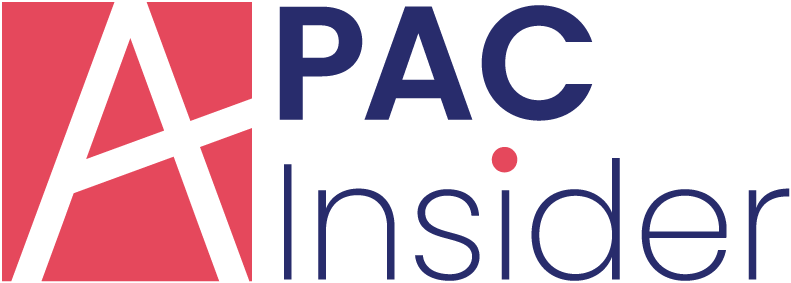
ADJUDICATION ENFORCEMENT: PLUGGING THE GAP OR OPENING THE FLOODGATES?
David Skelton, Partner in Construction & Engineering looks at how the Technology and Construction Court has established a “fast track” procedure under which a party with the benefit of an Adjudicator’s decision can quickly obtain summary judgment.
Background
In the 20 years since the Housing Grants Construction and Regeneration Act 1996 came into force, the cases which have emerged from the Courts have established a number of firm principles when it comes to enforcement of an Adjudicator’s decision. The Technology and Construction Court has established a “fast track” procedure under which a party with the benefit of an Adjudicator’s decision can quickly obtain summary judgment and will support the enforcement of Adjudicators’ decisions, even if the decision is wrong (see Macob Civil Engineering Ltd v Morrison Construction Ltd [1999] EWHC and Carillion Construction Ltd v Devonport Royal Dockyard Ltd [2005] EWCA Civ 1358. Only if the decision was obtained without jurisdiction or in breach of natural justice will enforcement be refused.
However, under the Civil Procedure Rules (CPR Rule 83.7) the Court will stay enforcement where it finds there to be “special circumstances” which render it inexpedient to enforce the judgment or order. In the context of Adjudication, it has been established for around 13 years, when the relevant principles were laid down in the judgment of Mr Justice Coulson in Wimbledon v Vago [2005] EWHC 1086 (TCC) that if, on the evidence before the court, it is likely that the “winning” party in the adjudication will be unable to repay the sums awarded by the Adjudicator (either because it is insolvent or its present financial position suggests that it would be unable to repay the sums awarded) a stay should be ordered.
So, if you are successful in your adjudication, you may feel confident that, unless the paying party could bring itself under any of the Wimbledon v Vago principles, an enforceable judgment is not too far away.
Recent developments
However, in two recent decisions of the Technology and Construction Court, the court has indicated its willingness to widen the circumstances under which a stay of enforcement will be allowed.
In Equitix ESI CHP (Wrexham) Ltd v Bester Generacion UK Ltd [2018] EWHC 177 (TCC), Mr Justice Coulson made it clear that the principles set down in Wimbledon v Vago were not to be considered “set in stone”. He said that the principles “do not for example deal with the position where allegations of fraud are made, particularly in circumstances where those might affect the financial standing of the Referring Party (who is almost always the party opposing the stay)”.
This thread has now been picked up in Gosvenor London Limited v Aygun Aluminium UK Limited [2018] EWHC 227 (TCC) by Mr Justice Fraser. That case started off (in the court’s words) with “an entirely conventional narrative for adjudication enforcement proceedings” but the twist came when it was alleged in evidence (including a draft Defence) served by Aygun in opposition to the enforcement proceedings that a substantial proportion of Gosvenor’s adjudication award was based on fraudulently invoiced sums.
The extent to which allegations of fraud can be used to defeat enforcement proceedings has been considered in a handful of cases. It had been thought, at least until the judgment in Gosvenor, that the court had set down a comprehensive set of principles that governed the circumstances in which fraud could be raised in the context of Adjudication enforcement. In Speymill Contracts Ltd v Baskind [2010] EWCA Civ 120, the Court of Appeal approved and applied the principles set out in SG South Ltd v King’s Head Cirencester LLP and another [2009] EWHC 2645 (TCC) that, in essence, it was only allegations of fraud that (i) were not or could not reasonably have been raised in the adjudication and (ii) that went to the subject matter of the adjudication, that should be raised at the enforcement stage.
The reasoning underlying those principles was captured by the Court in SG South when it said (para 34) “Fraud is a very serious charge to make in civil proceedings of any sort and, whilst of course it is established in a (relatively) few cases, the Court always demands that the allegations are spelt out and are at least on their face supportable by credible evidence. This applies equally if not more in adjudication enforcement proceedings when it would be very easy to “bandy about” fraud allegations to seek to avoid enforcement.”
Returning to the thread picked up in Gosvenor, Mr Justice Fraser considered the draft Defence and supporting evidence which had been served by Aygun and came to the conclusion that none of what Aygun had put forward was sufficient to surmount the basic hurdle that that material should have been deployed in the adjudication.
The new law on stay applications
That was not however the end of the matter because Aygun also applied for a stay of execution in the event that judgment was entered and it was in relation to the stay application that the significance of the Court’s decision arises. The Court acknowledged that none of the matters raised by Aygun (including their allegations of fraud) fell squarely within the Wimbledon v Vago principles but nevertheless considered the facts in the Gosvenor case justified the grant of a stay of execution and, because of that fact, a further principle should be added to those already set out in Wimbledon v Vago. That additional limb is to be expressed as follows:
“If the evidence demonstrates that there is a real risk that any judgment would be unsatisfied by reason of the Claimant organising its financial affairs with the purpose of dissipating or disposing of the adjudication sum so that it would not be available to be repaid, then this would also justify the grant of a stay”.
The Court was clear to emphasise that the additional limb was “only likely to arise in a very small number of cases and in exceptional factual circumstances”. Recourse to the new principle “will be extremely rare” and the standard for the party applying for the stay to meet is “broadly the same as the level of evidence necessary to justify the grant of a Freezing Order (what used to be called Mareva relief)”.
Some thoughts
Whilst the extent of the practical impact remains to be seen, there are a number of potential issues with the new test. The following are a few initial thoughts and questions:
1. The court in Gosvenor decided that it was entitled to take into account allegations of fraud that were based on material that was before the Adjudicator and was taken into account by him when coming to his decision. There is a risk that this invites a party on the wrong end of an Adjudicator’s decision to resurrect issues that were before the Adjudicator, essentially allowing the court to make a collateral attack on matters already decided by the Adjudicator. This was precisely the issue warned against in the line of authorities culminating in Speymill.
2. The introduction of the notion of a “risk of dissipation” also risks the disgruntled party introducing significant amounts of evidence relating to the subjective intentions of the parties, as well as a far more detailed analysis of the financial affairs of the successful party, than would be expected under Wimbledon v Vago, where the question for the court as to whether there are grounds for a stay is more clear cut. The worry could be that a paying party will simply raise as much “dirt” as it can, in order meet the low bar that there is a “risk” of dissipation, without taking into account any of the other checks and balances that would arise under a ‘standard’ application for a Freezing Order. Is this really suited to the overriding aims of the 1996 Act?
3. Will the test (linked as it seems to be to the standard of a Freezing Order) actually work? For example, one vital aspect of the Freezing Order is that the Applicant must put forward evidence that is has a “good arguable case” in respect of the claim it intends to bring against the Respondent. Applying that to the current context, that would mean the paying party having to show that they had a prospect of demonstrating that they had at least some entitlement (that was more than merely theoretical) to recover any of the Adjudicator’s award on a final determination. However, the generally held view on adjudication enforcement is that the Court will not look at the merits of the Adjudicator’s decision so it is difficult to see how the prospects of “overturning” an Adjudicator’s decision (to meet this part of the Freezing Order test) will be dealt with. It is also difficult to see why the court would need to add this (effectively less stringent) test into enforcement proceedings, where it would at all times be possible for a paying party to obtain a Freezing Order.
Conclusion
We will wait to see whether Defendants to Adjudication enforcement proceedings seek to take advantage of the new limb in Wimbeldon v Vago and, indeed, whether it remains in place in its current form for any appreciable time.






















